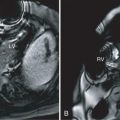
Medical sterilization has assumed massive significance in a post-pandemic world, with the constant threat of similar microbial invasions. The BBC recently reported that drug-resistant bacteria are on the rise in Ukraine. War conditions can lead to faster growth of potent microbes as clinics struggle to keep up with sanitization and sterilization requirements.
Sterilizing equipment used in surgical procedures is integral to patient safety. However, over time, the industry-standard procedures used for sterilization have come under scrutiny for health and environmental repercussions. Ongoing research aims to develop safer methods that don’t involve toxins (or minimize the level of toxins).
Ethylene Oxide for Sterilization: The Downsides
The most frequently used method in the US is ethylene oxide gas (or EtO). It is particularly impactful for cleaning heat-sensitive equipment, like pacemakers or ventilators.
However, industrial plants that release EtO into the air create a health risk to the nearby communities. Various reports, including those by the US EPA, have found that these emissions can increase one’s cancer risk. The risks cover several types of cancer, like that of the breast and Acute Myeloid Leukemia. Currently, an ongoing ethylene oxide lawsuit aims to hold such plants accountable for failing to control EtO emissions.
Naturally, the threat is more severe for those living in proximity to the plants and the involved workers. The duration of one’s exposure can also help understand if the emissions had a causative effect on illness. TruLaw notes that documenting medical, employment and residential history can assist with claiming compensation for related lawsuits.
Alternatives to Ethylene Oxide for Sterilization
Considering the downsides of conventional EtO-based methods, researchers are studying viable alternatives. Some chemicals, like hydrogen peroxide and chlorine dioxide, while effective, also cause corrosion on the required surfaces. Using them is also not suitable in certain cases because of the risk of hazardous material classification.
Here are three alternative approaches for medical sterilization units to consider.
1. Plasma-Aerosol for Sterilization: Why It’s Worth Considering
A Nature study finds that cold atmospheric plasma-aerosol (CAP-A) can be a suitable option to sterilize equipment without damaging the material. The study found that CAP-A inactivates microbes and limits the creation of biofilms. It is worth assessing this option on a larger scale to sterilize thermolabile or heat-sensitive medical equipment.
Another advantage of CAP-A is the reduced risk of toxicity and unintended adverse reactions. It does not leave behind poisonous residue that can cause harm to the biosphere. Also, since the method can be standardized and automated, it can be implemented in clinical settings to enhance patient safety.
Additional research will be essential to check the cost-effectiveness of this approach when compared to conventional methods. It remains to be seen how well this method performs in multi-center laboratory settings with larger samples.
2. Gamma Radiation for Making Sterilization More Effective
Some studies have found that gamma radiation can strengthen the sterilization process in medical devices made from polyvinyl chloride (PVC). It also works well for tissue-based products and pharmaceuticals.
A simulation study published in Nature has found that gamma radiation can reduce the standard sterilization time from up to 90 minutes to just over six. It is a significant upswing over the efficacy of traditional steam sterilization. Moreover, this process has high penetration, letting the radiation reach high-density areas. Therefore, the method also provides reassurance that no areas remain unsterilized.
Regardless, one must not overlook the need to use this technique with caution. The WHO notes that ionizing radiation can cause health effects and raise the probability of cancer after prolonged exposure. Therefore, any facility that uses this technique must comply with the standard guidelines for safety.
It also remains questionable if gamma radiation is a suitable sterilization technique for long-term use (where prolonged exposure is involved). Further research will shed light on the possible effects of sustained exposure, even in microdoses. Workers at such facilities may require continued monitoring to detect any health concerns in the early stages.
3. Self-Sterilizing Medical Tools: A Possibility
In the future, it seems possible that self-sterilizing medical equipment might become available. The idea is to limit human intervention as much as possible, thereby also reducing the scope of error. Such devices can become accessible through a combination of surface coatings and antimicrobial agents.
Interestingly, some researchers believe that copper is an excellent configuration for self-sterilizing equipment. The active material can eliminate pathogens within seconds, similar to alcohol-based wipes and sanitizers. The safety of this material stems from copper’s legacy of medical use in procedures like transcription factor regulation and angiogenesis.
Some studies have discussed the efficacy of animal proteins in making implants safer and more protected from bacterial infections. A study by Australia’s RMIT University found that resilin-mimetic proteins can prevent bacteria from clinging to a surface. Thus, antibacterial coatings with these proteins can be immensely helpful in protecting patients from possible post-surgery infections.
Currently, the medical sterilization field is witnessing innovation and ideation, with multiple techniques floated for efficacy and safety. It will be imperative to consider an approach from a 360-degree perspective, gauging its impact on the patient, the healthcare team, and the overall community.
It may be time to reassess techniques that release toxins into the atmosphere since they may create a cyclical pattern of health problems. Instead, approaches that focus on environment-friendly and sustainable materials deserve greater attention in these sensitive times.
Stay updated, free articles. Join our Telegram channel

Full access? Get Clinical Tree








